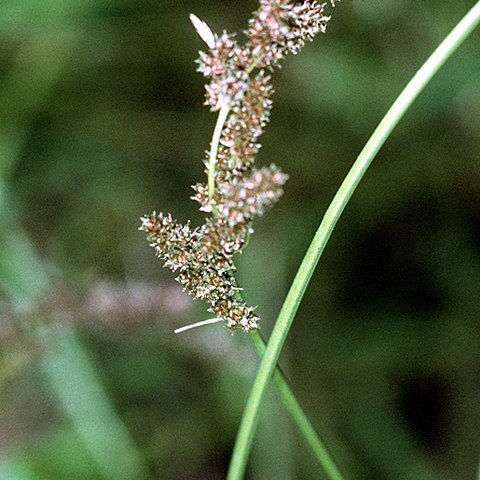Stems stout, clustered, 5–10 dm, aphyllopodic; lvs ± elongate, mostly 5–8 mm wide; sheaths ventrally pale, red-dotted, and concave at the mouth; spikes androgynous, small, sessile, aggregated into a compound, evidently spicate-paniculate infl 7–15 cm, the lower branches to 4 cm and with numerous spikes; scales triangular-ovate, mucronate, about equaling the body of the perigynium; perigynia deep olive-green, coriaceous, biconvex, obovoid, 2–2.8 mm, three-fifths or two-thirds as wide, obscurelyfew-nerved ventrally, strongly several-nerved in the basal half dorsally, abruptly rounded above to a rough-margined beak a third as long as the body. Swamps; N.Y. to Mich., s. to Fla. and La.; very rare in the north.

